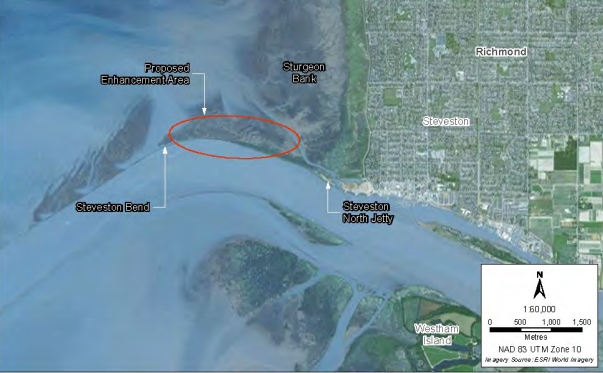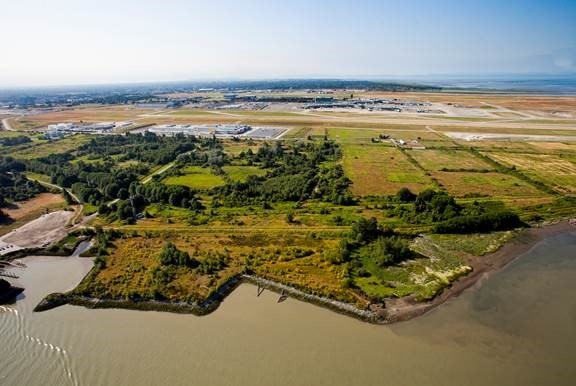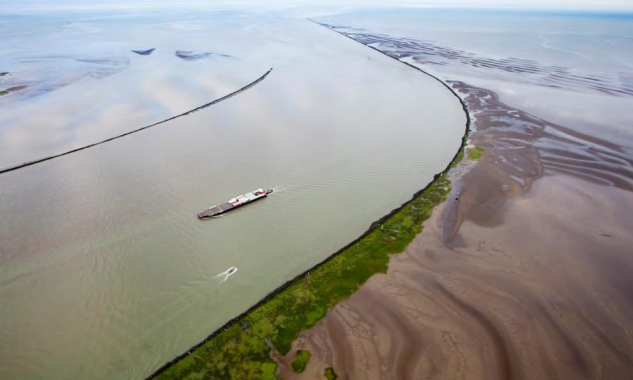Vancouver Fraser Port Authority is working to create and restore wildlife habitats across the Lower Mainland, including two sites in Richmond, to help mitigate the impact of future port development projects.
The proposed site of the South Arm Jetty Tidal Marsh — located near Sturgeon Bank across from Steveston Village — is currently an intertidal sand flat with shallow subtidal areas and no vegetation.
The port authority is planning to convert approximately 43 hectares of this sand flat into a marsh habitat to expand the existing Sturgeon Bank wildlife management area located there.

According to a 2018 city report, Sturgeon Bank, which is provincial land, “provides a critical habitat for shorebirds, migrating and wintering waterfowl, and raptors.”
It’s also part of the Pacific Flyway, a major migration staging area, which, according to the report, supports the largest concentrations of wintering waterbirds in Canada.
The report also notes that all five species of salmon use the marsh at Sturgeon Bank during their lifecycle, as do “an abundance” of other fish species, invertebrates and a variety of flora and fauna.
According to a report submitted by the port authority to the BC Environmental Assessment Office, the brackish marsh would be created by using fill material to raise the elevation of the sand flat. Marsh vegetation would then be introduced to the area through transplanting or by letting plants spread naturally.
Once a decision is made to proceed with the project funded by the port authority, the port will work with the City of Richmond on flood prevention, and Environment and Climate Change Canada on Sturgeon Bank erosion, as well as other stakeholders.
And while there are currently no plans to advance the second proposed tidal marsh project, it is expected to have similar benefits for wildlife.
The McDonald tidal marsh — located on Sea Island north of YVR on the north arm of the Fraser River — would convert approximately 2.9 hectares of land into a “high quality fish and wildlife habitat,” according to the port authority.
The proposed site used to be a productive tidal marsh, but was filled sometime around the 1950s.
In the 1990s, the area was used as an aggregate off-loading site during the construction of YVR’s third runway. After that project was completed, the McDonald site was left relatively alone and allowed to revegetate.
The port authority says it would convert the area into a tidal basin, with intertidal marsh and tidal channel network and an adjacent riparian area.




